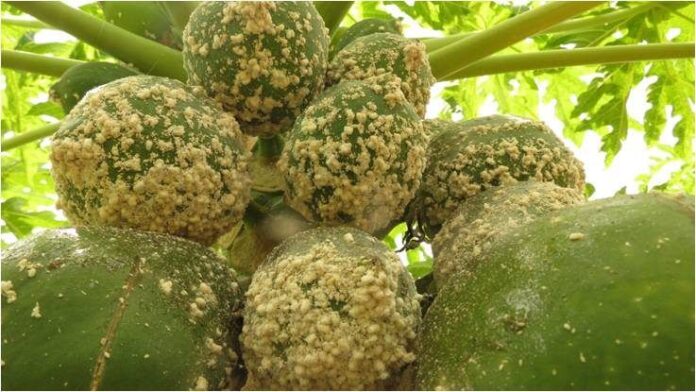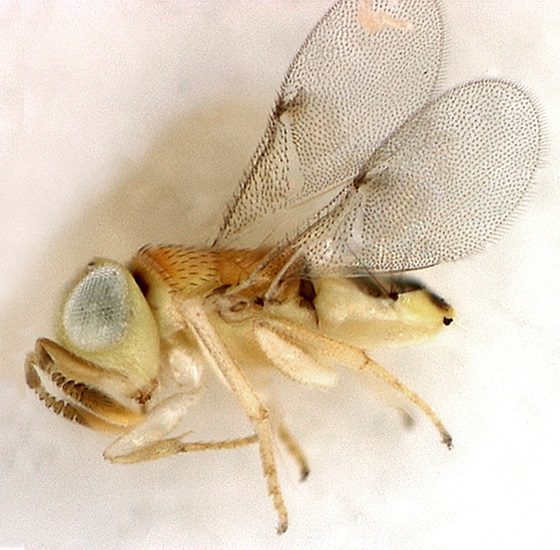
By Zablon Oyugi
A Centre for Agriculture and Bioscience International (CABI) led study has indicated “strong evidence of exceptional efficiency” of a biological control for papaya mealybug pest that has been problematic to pawpaw farmers in Kenya and Africa.
According to the researchers’ findings published in the journal Crop Protection, Papaya mealybug (PMB), Paracoccus marginatus, native to Mexico and Central America, invaded Kenya in 2016 causing severe yield losses of between 57 and 91 per cent and £2224 (about Ksh418,196)/ha household economic losses annually.
The polyphagous invasive pest attacks plant species in more than 200 botanical families where it sucks and injects toxic substances into the leaves, stems and fruits.
“Heavy infestations by PMB produce large volumes of honeydew and thick white waxy secretions, which provide a suitable medium for the growth and development of black sooty mould covering infected fruits, leaves and stems, making the affected fruits inedible and unmarketable,” states the study in part.
Female parasitoids
However, the scientists have found that female parasitoids play a pivotal role in the pest control through host feeding or oviposition, leading to the reduction of papaya mealybug (PMB) populations.

CABI scientists and colleagues from the Kenya Plant Health Inspectorate Service (KEPHIS), the Kenya Agricultural and Livestock Research Organization (KALRO), and Kenyatta University (KU), said Acerophagus papayae is a “good candidate” to control PMB which, in Kenya, causes crop losses ranging from 53-100 per cent.
It is a classical biological control remedy for PMB that should be part of an Integrated Pest Management (IPM) plan for PMB. This reduces the overreliance on chemical insecticides that are harmful to use and more damaging for the environment.
The scientists highlight how A. papayae – a small parasitic wasp that attacks PMB by laying eggs in it – was imported from Ghana into the quarantine facility at KALRO and investigated to see how successful it could be in controlling the papaya pest.
The researchers sought to evaluate the ability of the species to parasitize PMB after it was released at six papaya farms in the coastal region of Kenya between December 2021 and November 2022.
They studied the parasitism rates, sex ratio, and development time of the parasitoid under choice and no-choice experimental conditions.
- papayae established in all six research sites
Field-released A. papayae established in all six research sites within the coastal counties, with a parasitism rate of 30% or higher at all research sites within a month.
The highest parasitism rate (72.89%) was recorded after more than 1,000 parasitoids were released on a farm, and parasitism was observed four months after releases.
Significant differences in host choice were noted when A. papayae was offered several host stages, with third instars being preferred over second instars. Adult females were preferred over third instars.
Dr. Selpha Miller, lead author and Postdoctoral Research Fellow, Invasive Species Management at CABI, said, “The high parasitism rates and female-biased sex ratios obtained with third and adult female host instars indicate that mass rearing of A. papayae should be done with these host instar stages.








